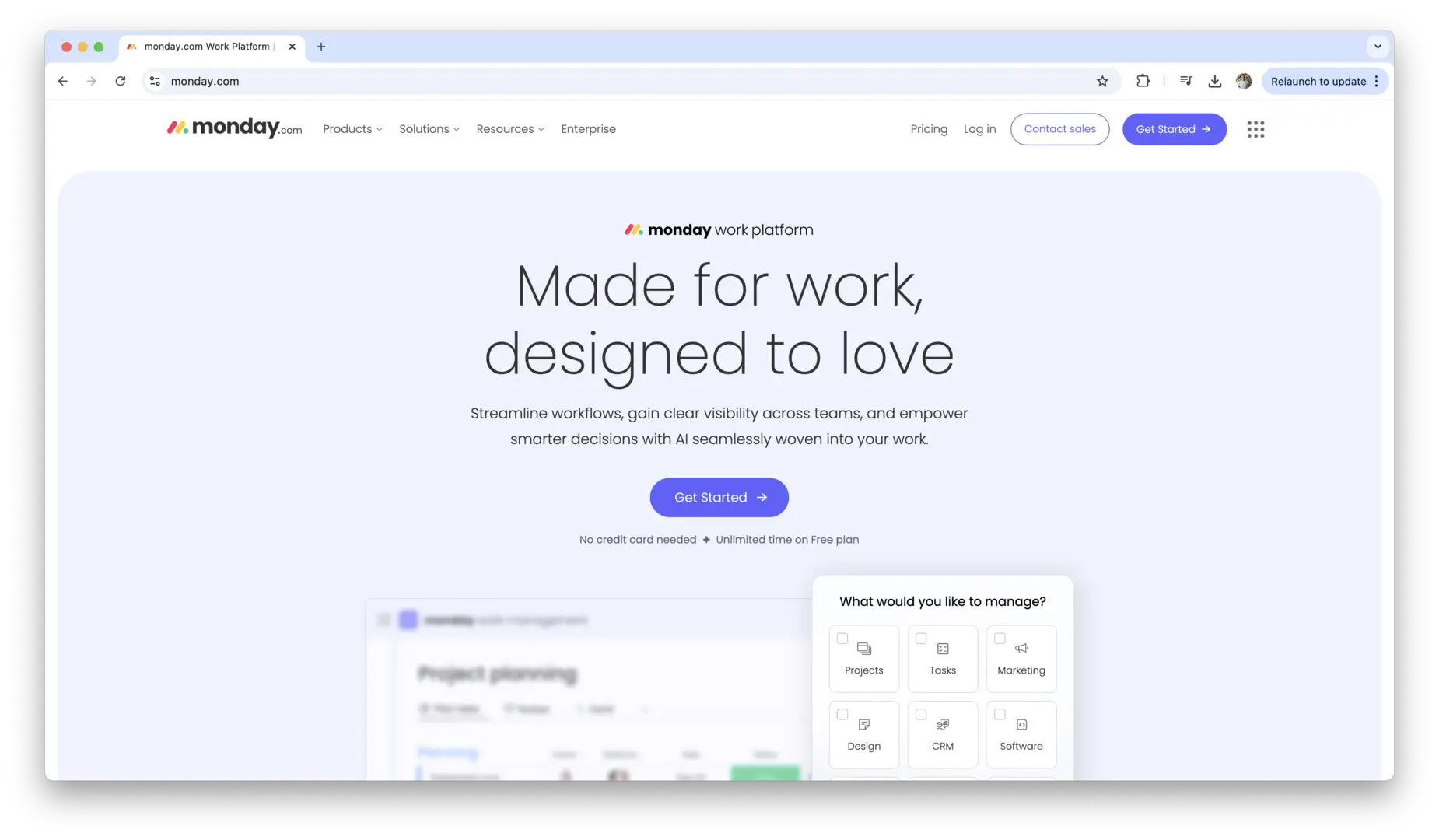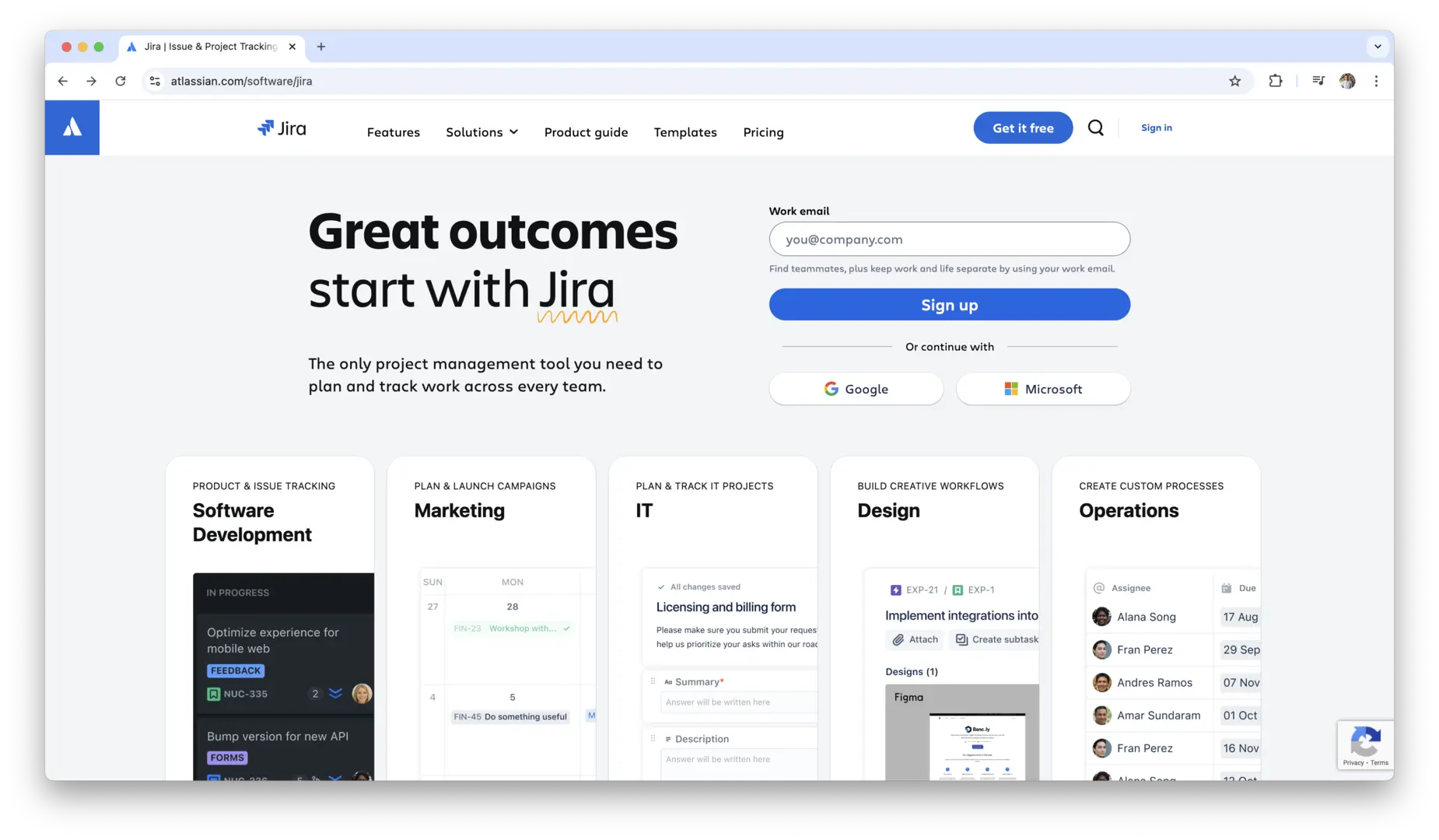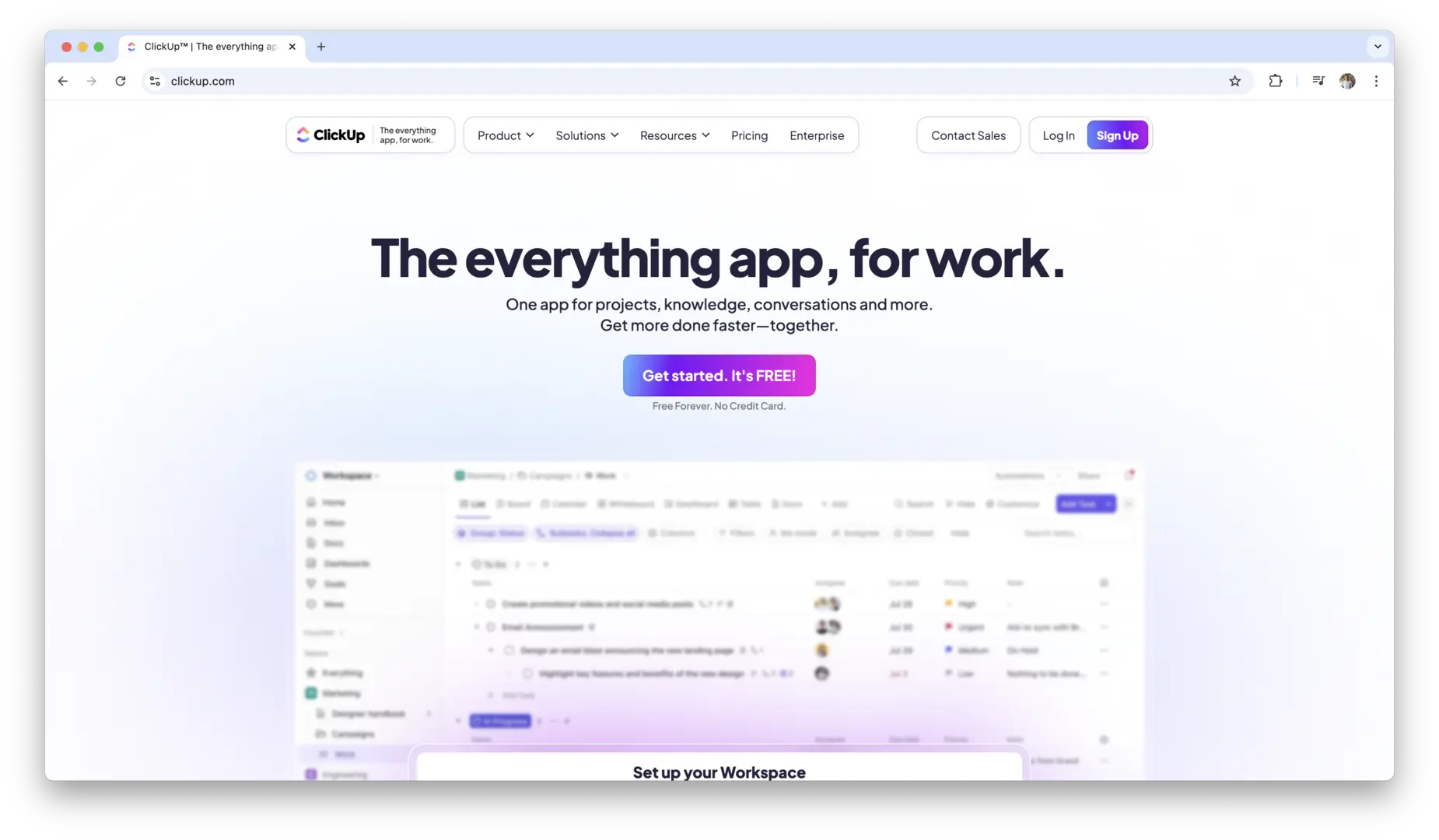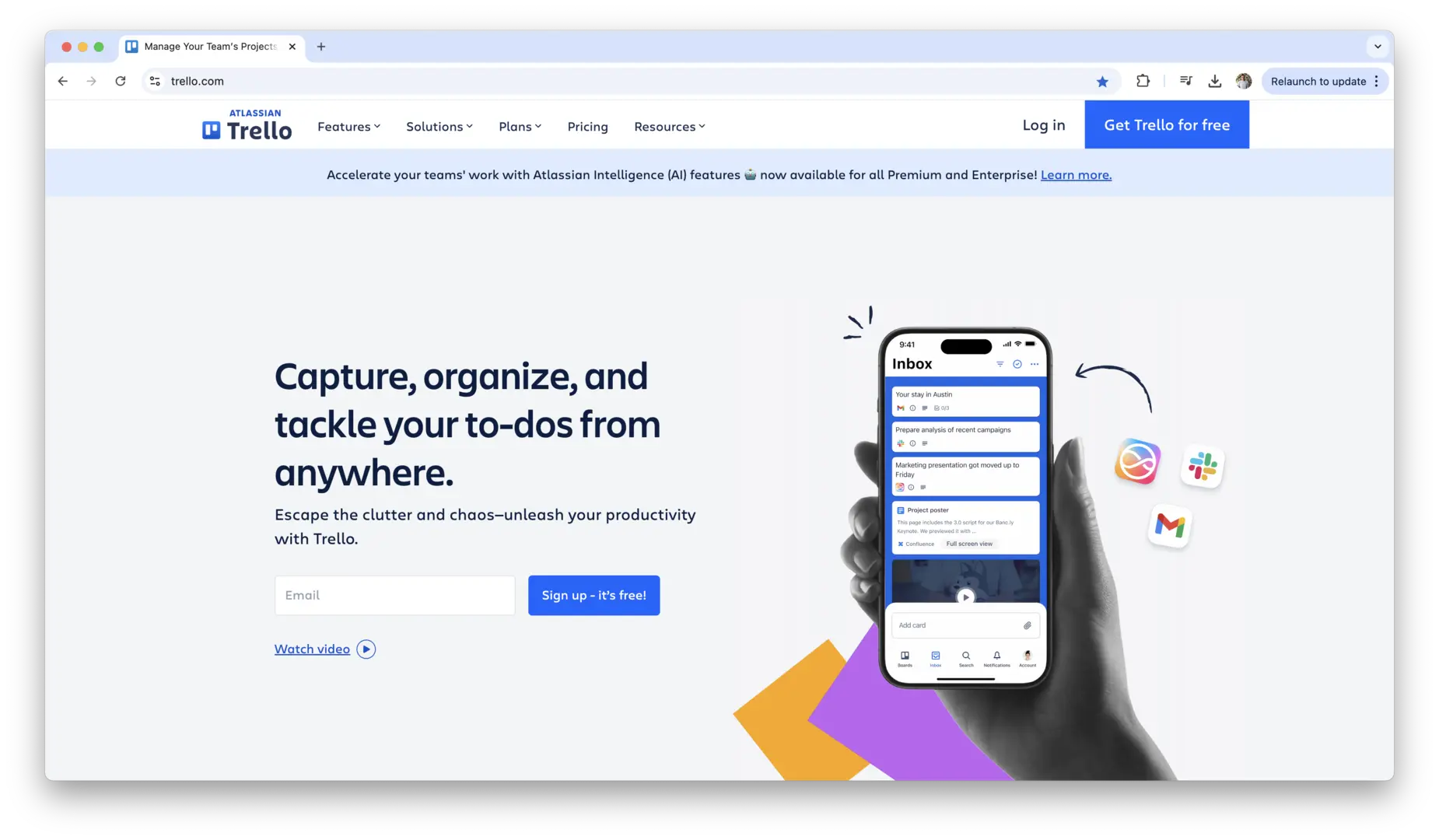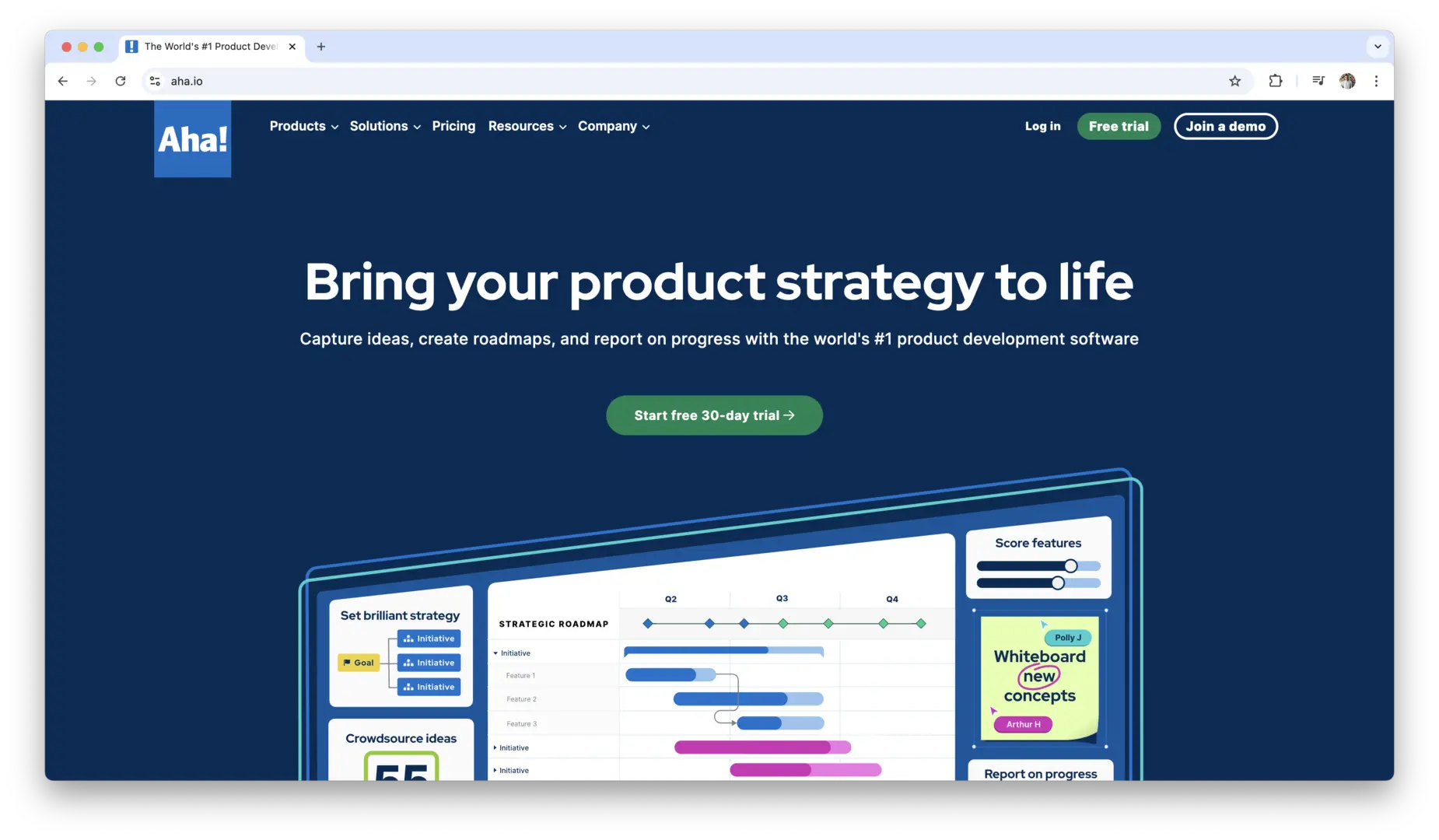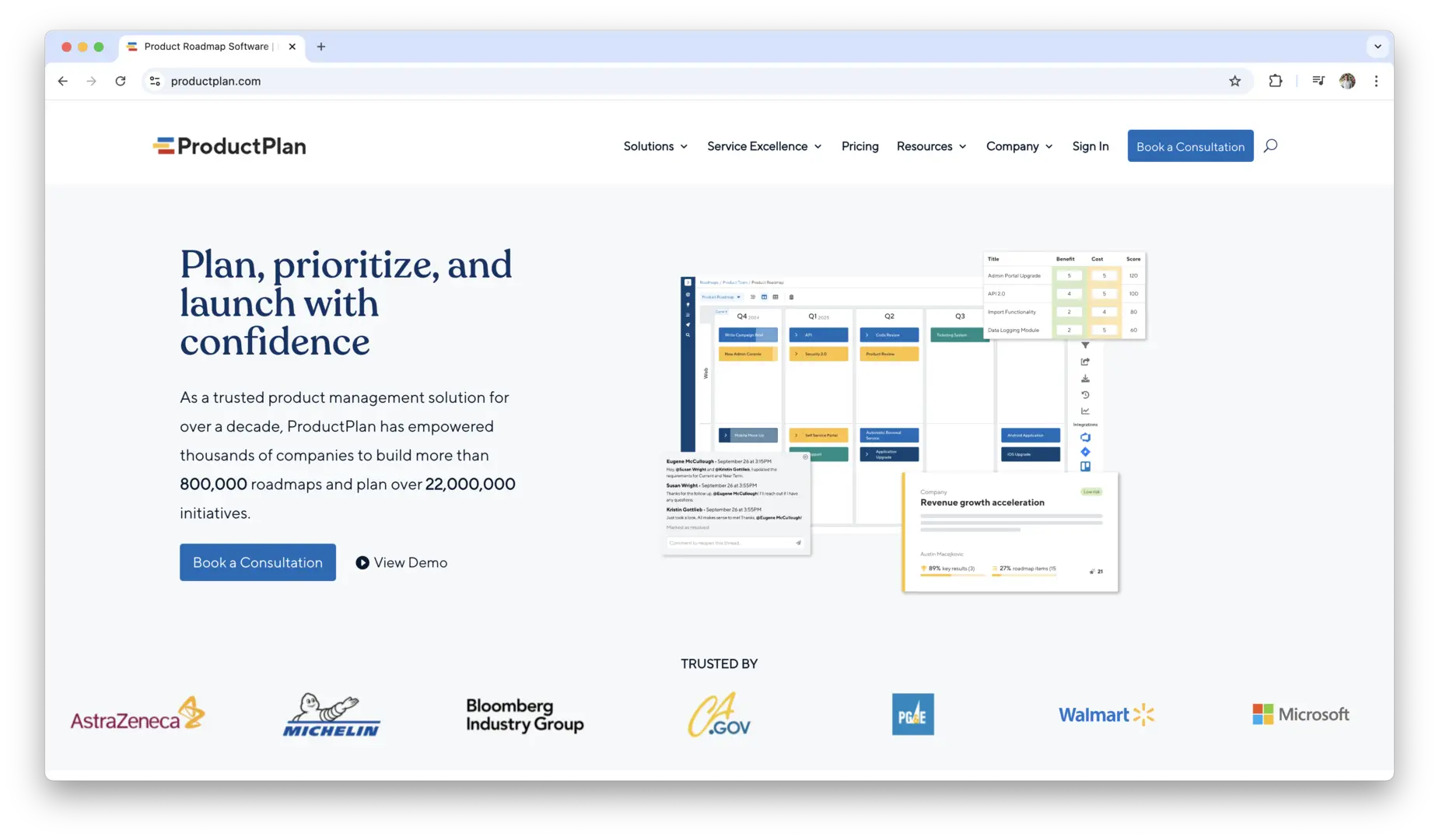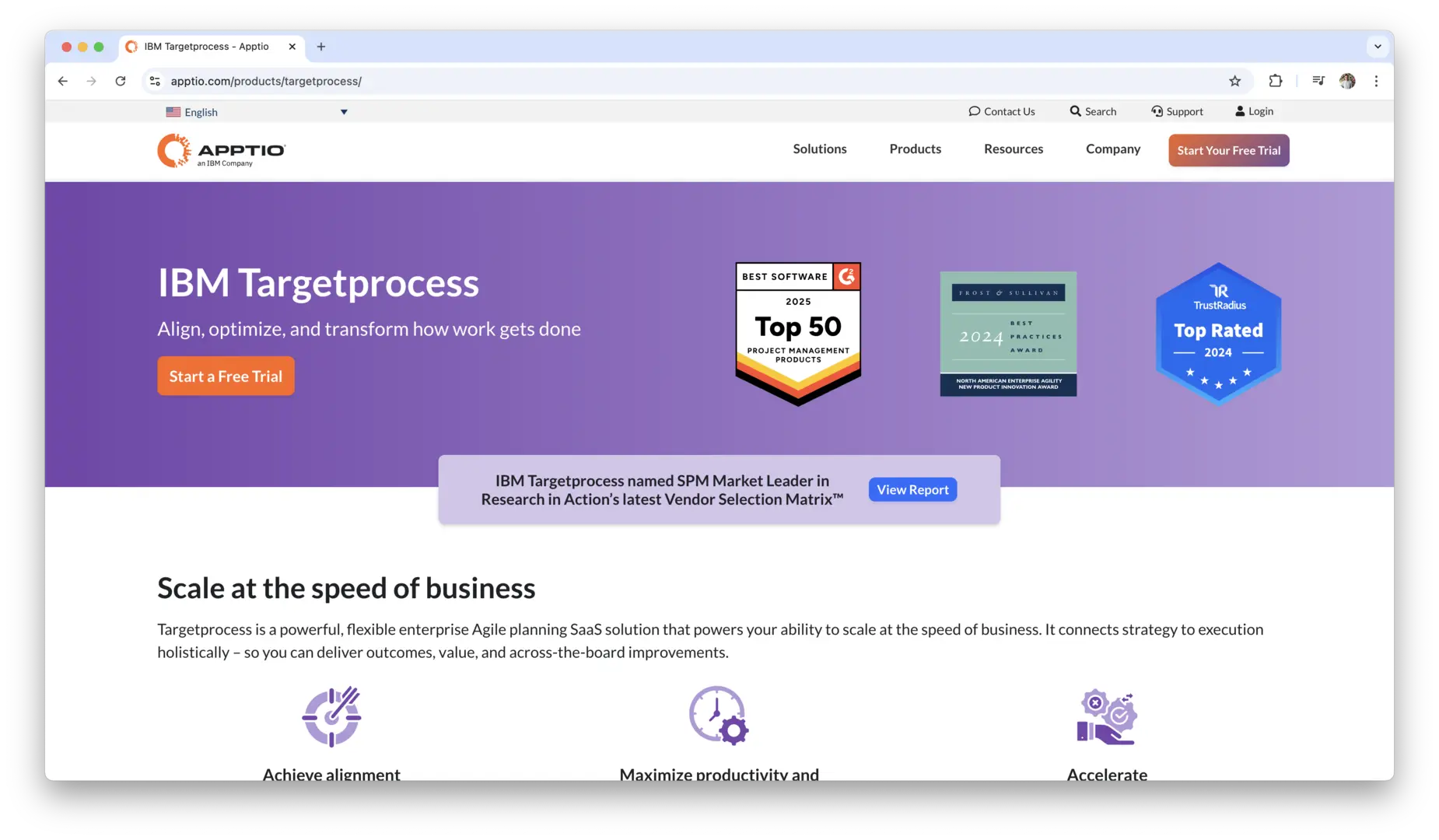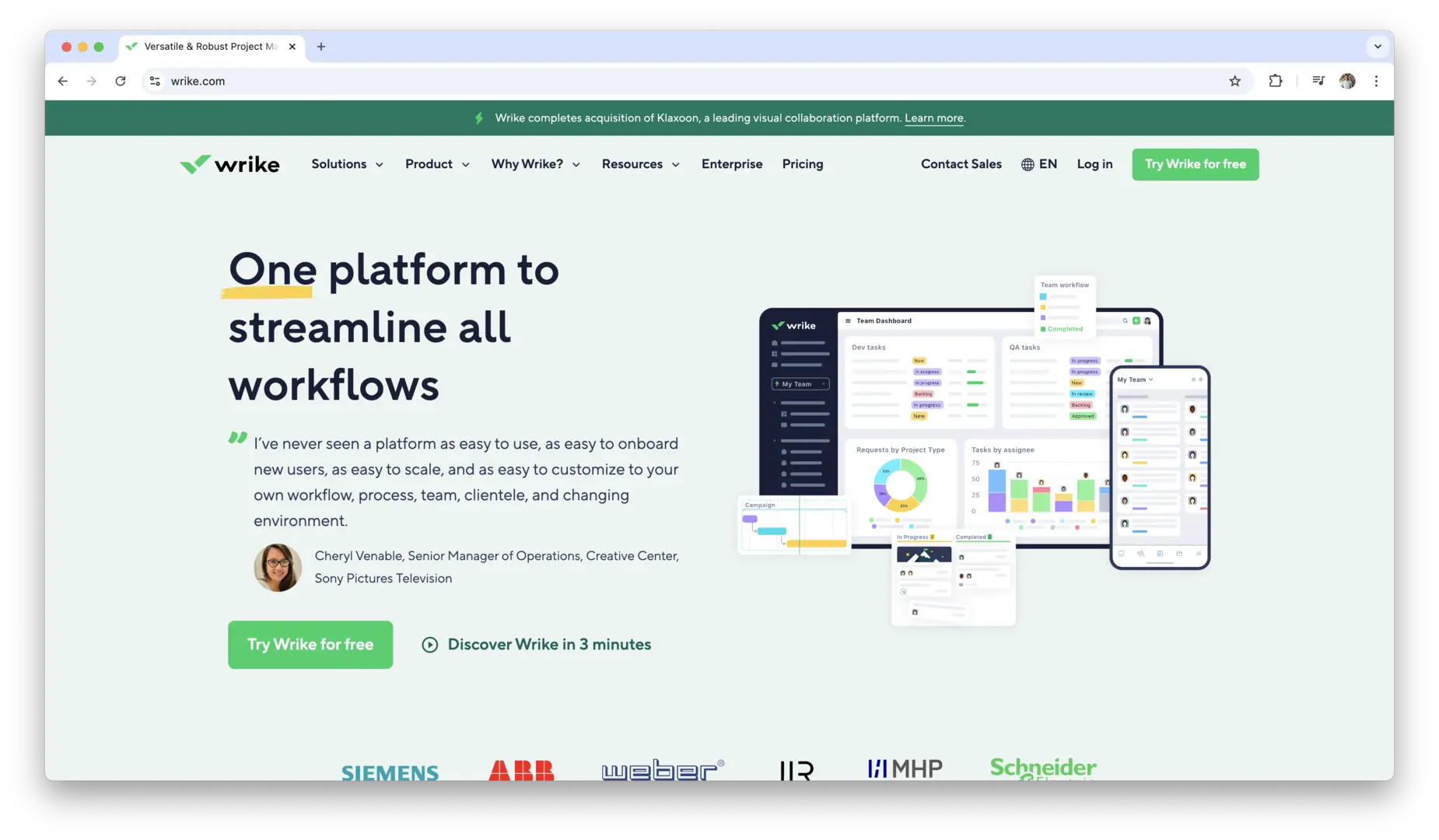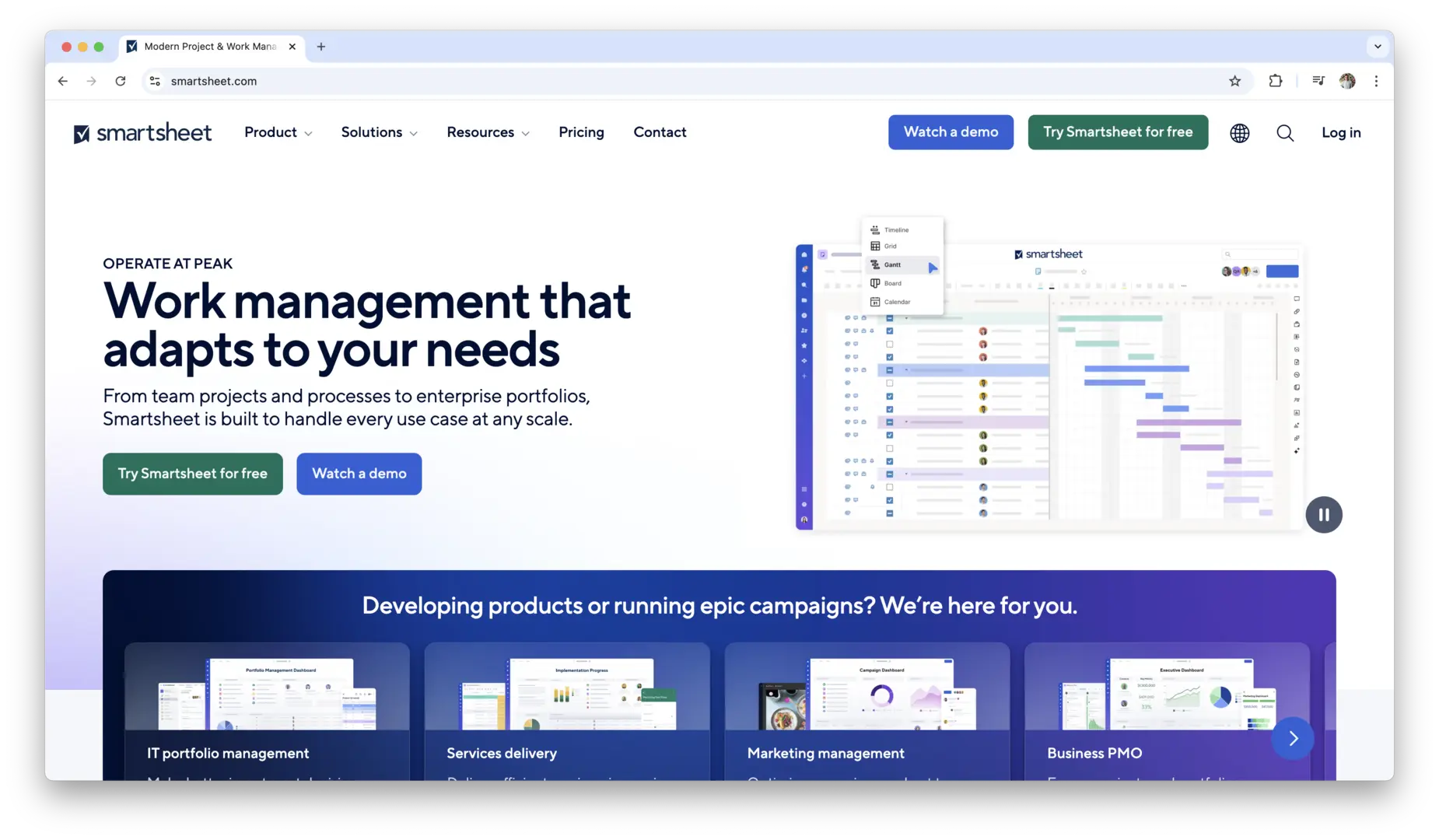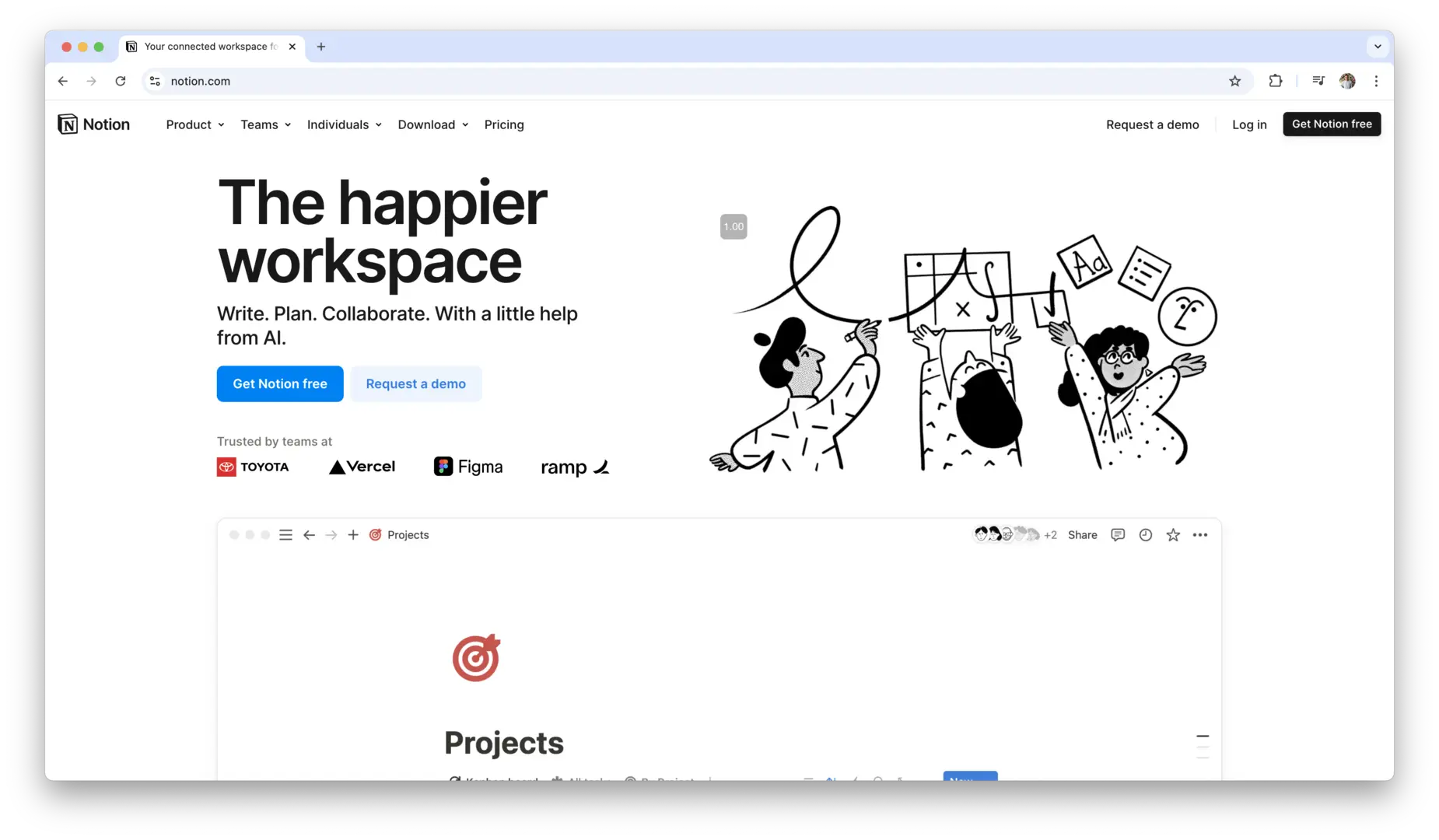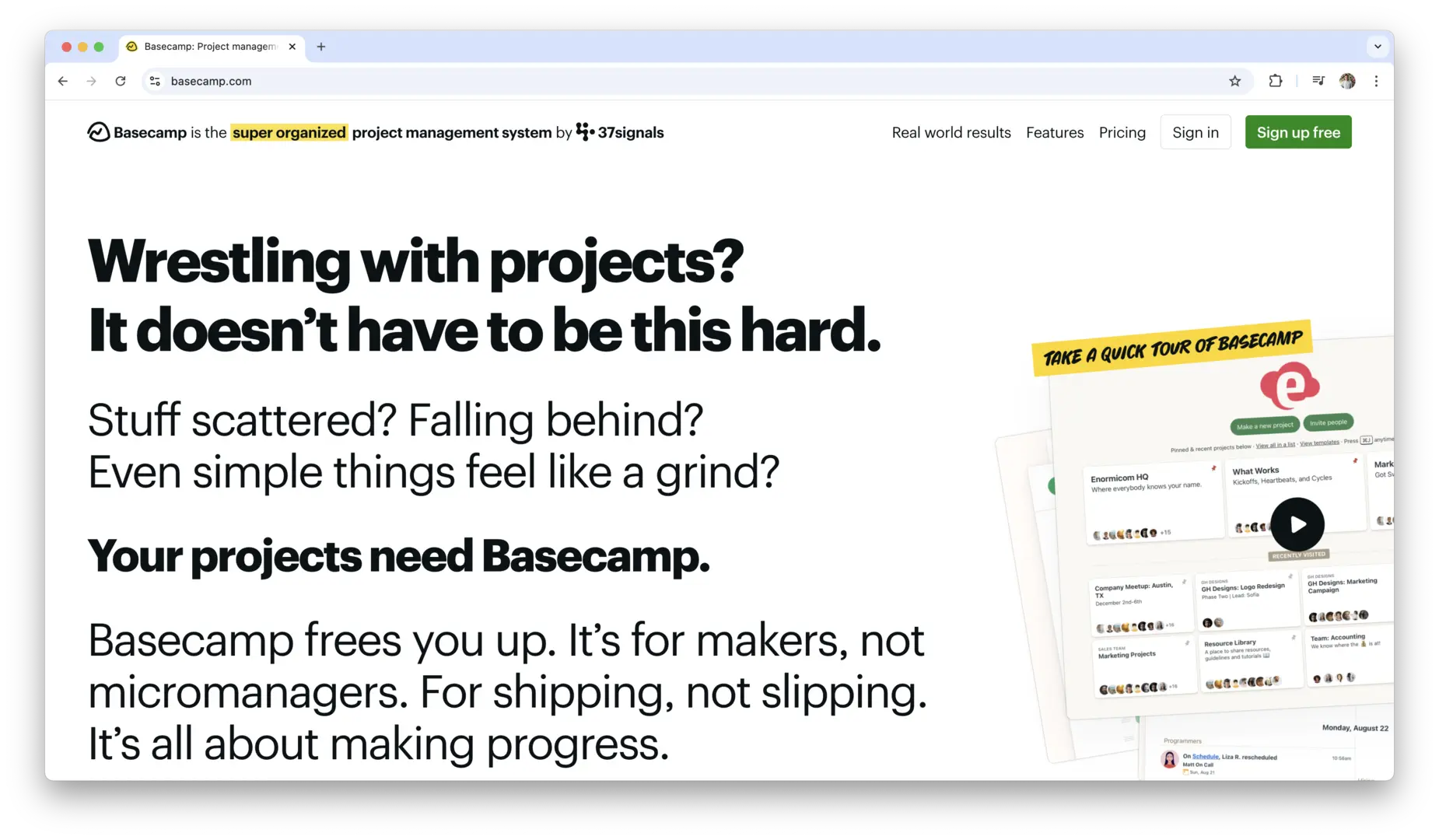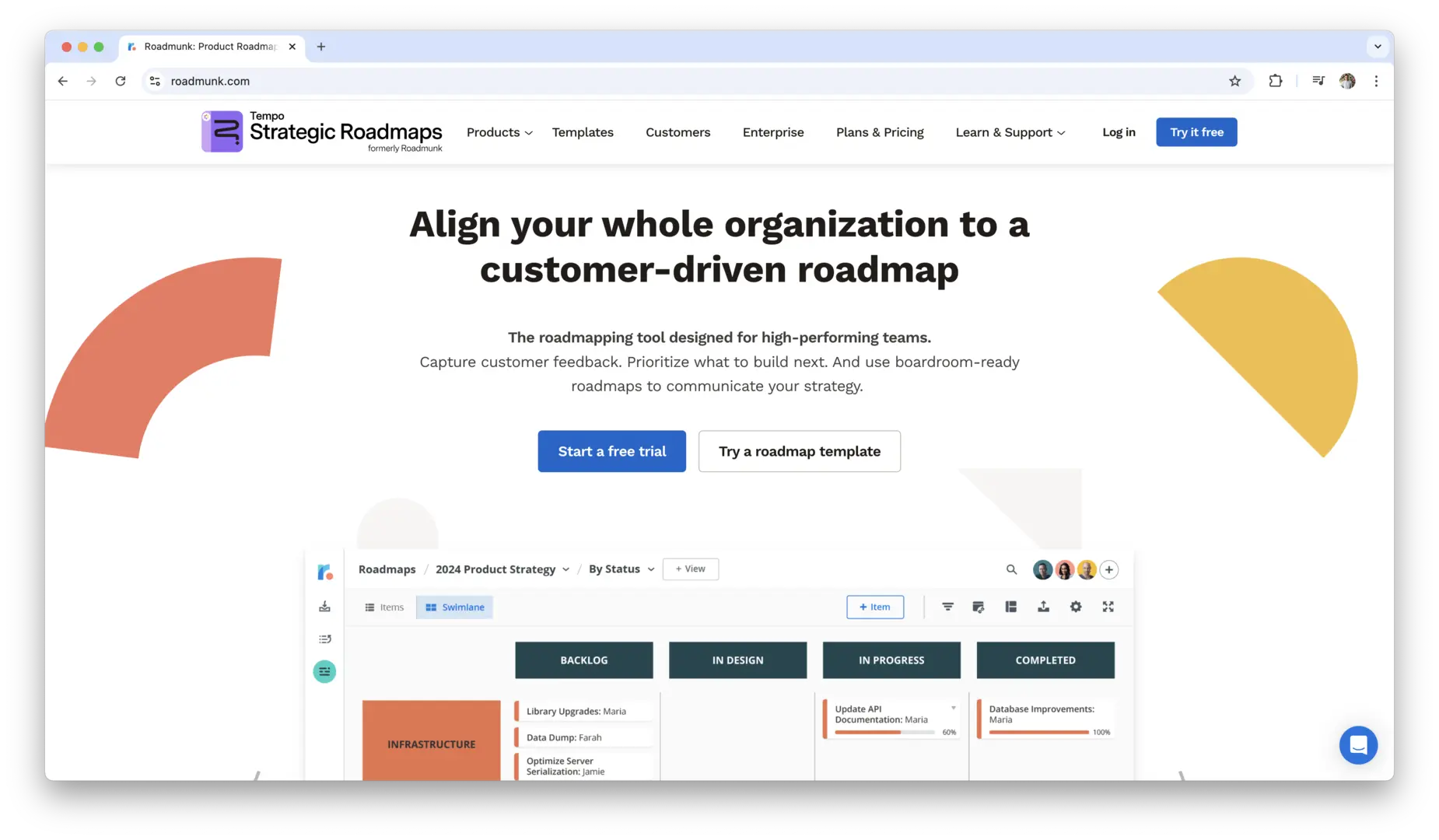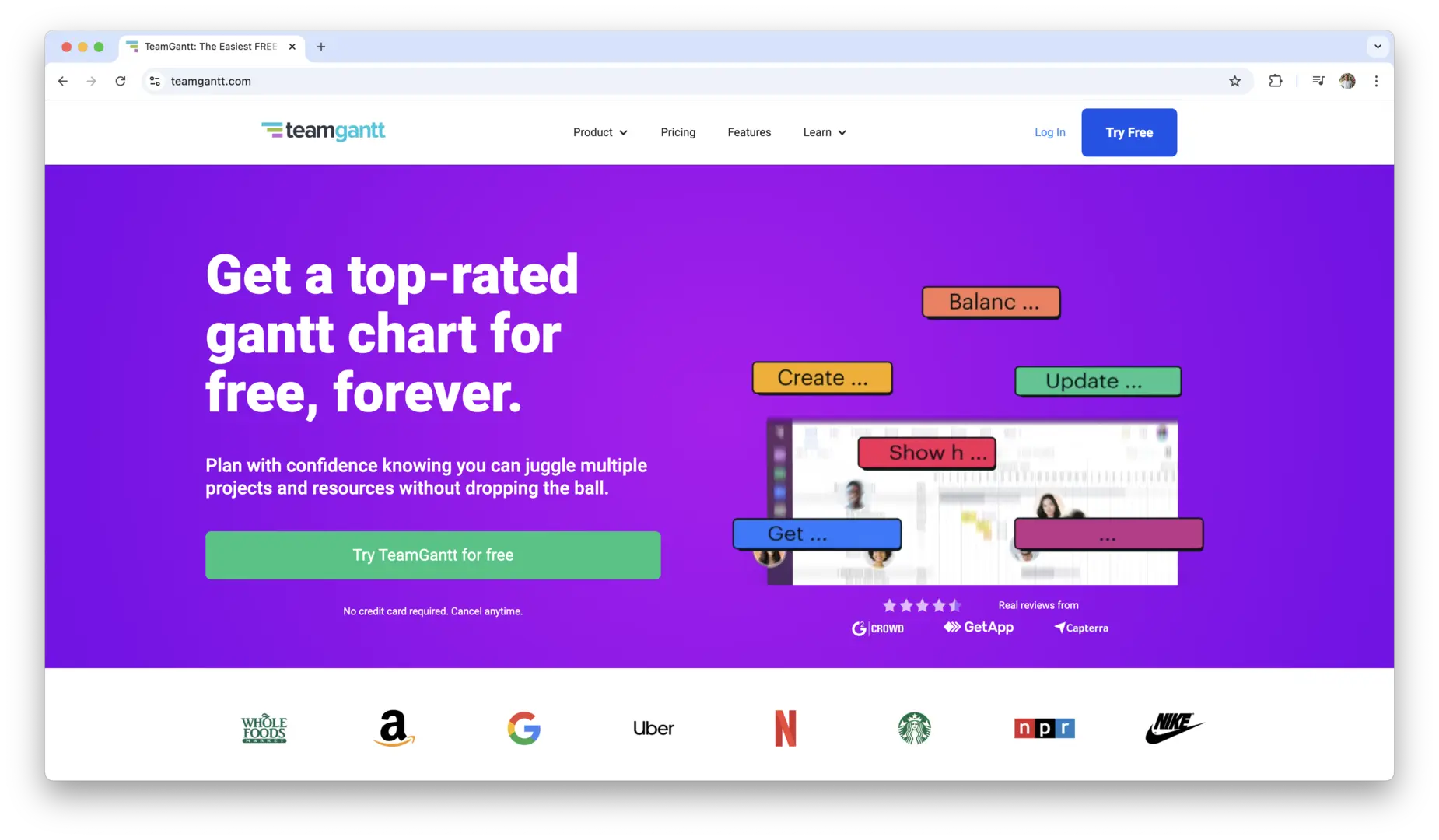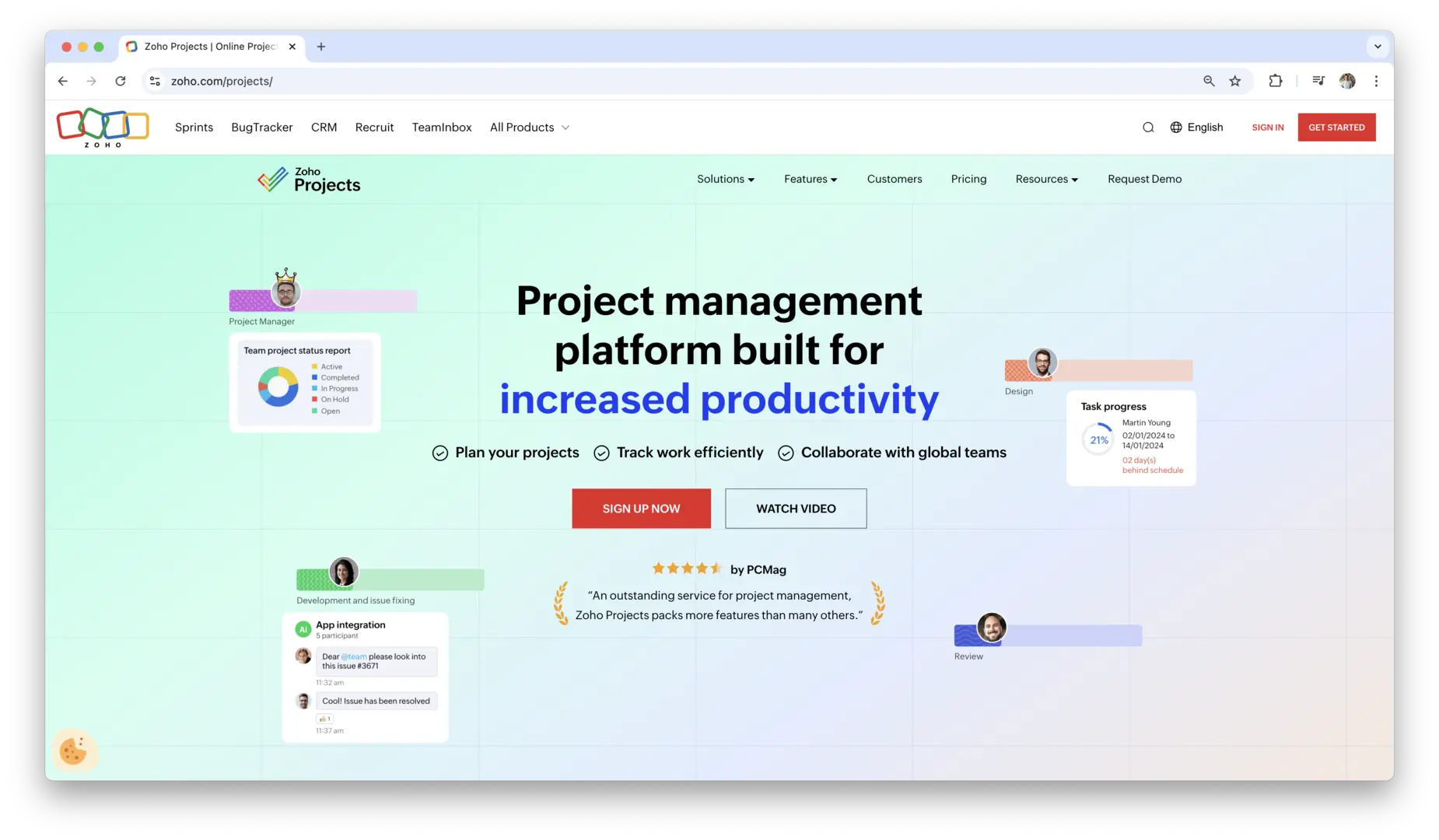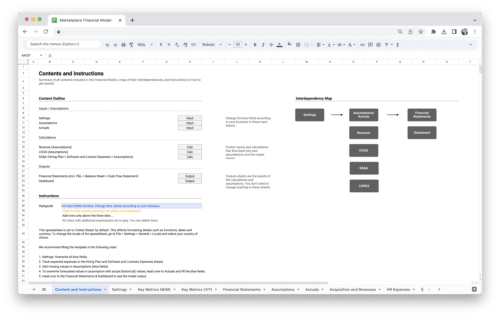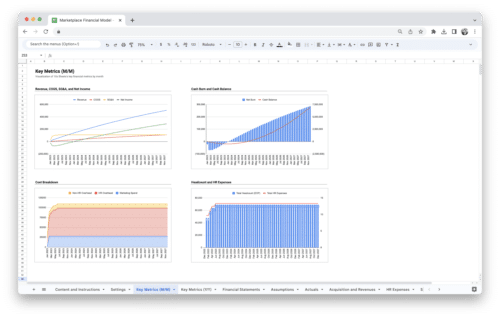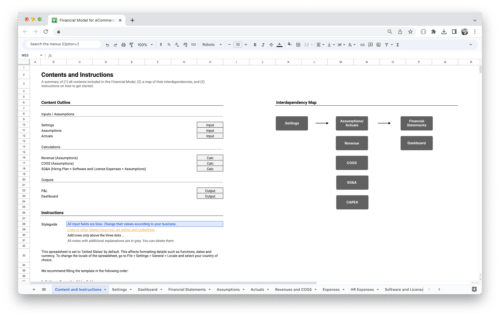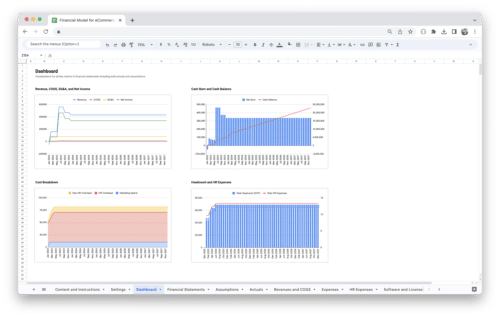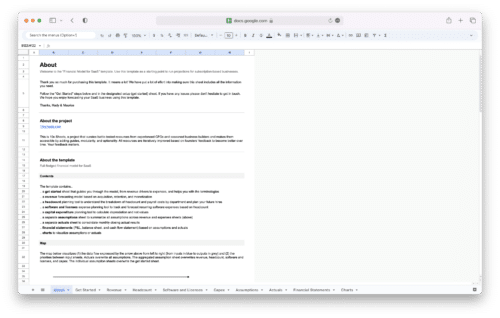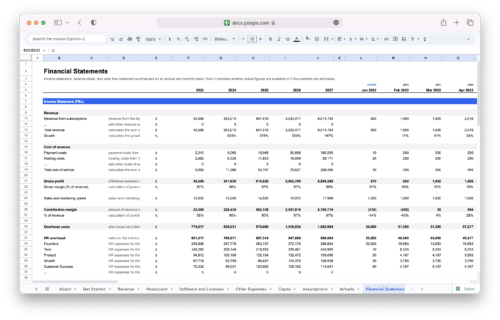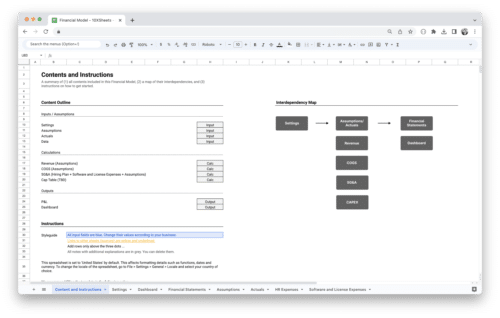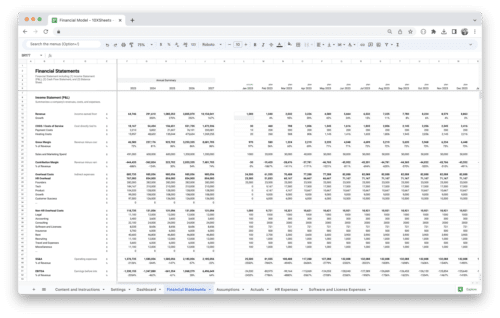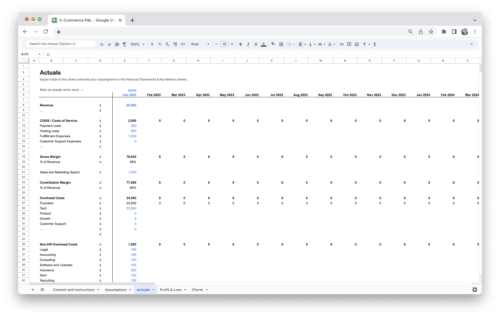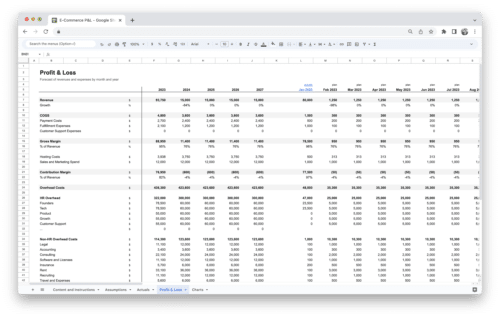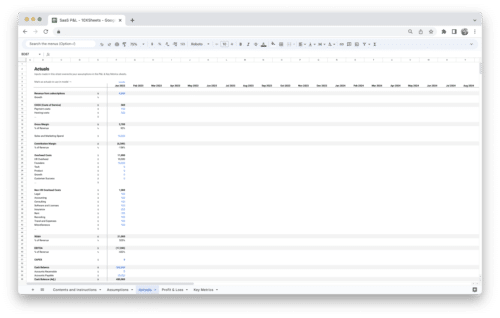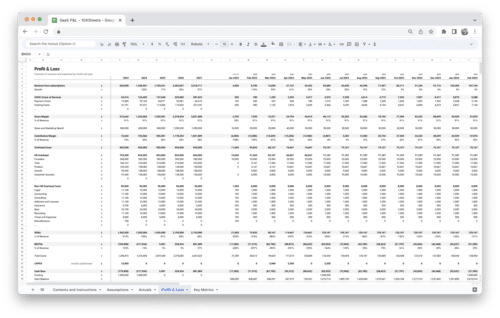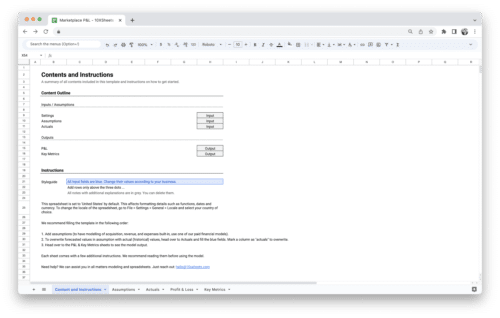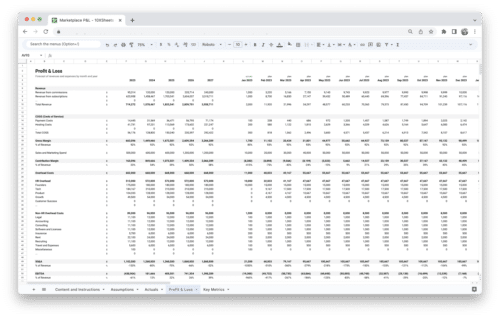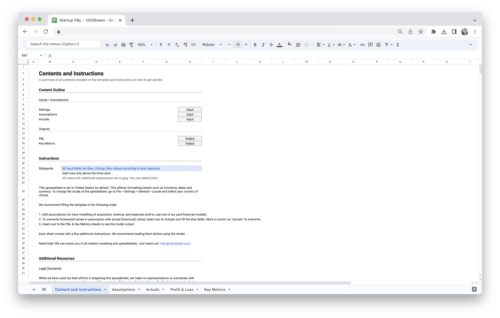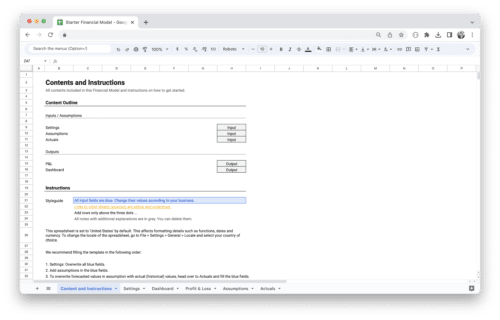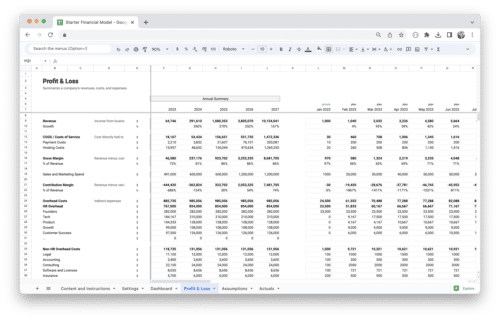What if you had the perfect tool to help you manage your product from idea to launch, keeping your team on track, organized, and focused? In today’s fast-paced world of product development, having the right product management tool can make all the difference. Whether you’re part of a small startup or a large enterprise, the right tool can streamline communication, simplify task management, and ensure everyone is aligned on goals and timelines.
With so many options out there, it can be overwhelming to know which one to choose. This guide will walk you through the top product management tools available today, highlighting their features, strengths, and what makes them stand out, so you can find the best fit for your team’s needs.
What are Product Management Tools?
Product management tools are digital platforms designed to help teams plan, organize, and execute product development processes more efficiently. These tools facilitate collaboration, streamline workflows, track progress, and provide insights into the product’s lifecycle. They support various aspects of product management, including roadmapping, task management, feature prioritization, bug tracking, and team communication.
Essentially, these tools act as a centralized hub where all the moving parts of a product’s development can be monitored and coordinated. Whether you’re a product manager overseeing a small team or a leader in a large organization managing multiple products, the right product management tool simplifies your job by providing clear visibility into every stage of development.
Product management tools can vary in functionality, from simple task management boards like Trello to comprehensive platforms like Jira or Monday.com that offer features for sprint planning, reporting, and integration with other tools in your tech stack. These tools help product managers track deadlines, allocate resources, manage teams, and keep stakeholders informed, ensuring that the product development process runs smoothly and efficiently.
Importance of Product Management Tools in Today’s Business Landscape
Product management tools have become a critical component of modern businesses, particularly as organizations scale and product development becomes more complex. In today’s fast-paced environment, product managers are expected to juggle multiple priorities, manage cross-functional teams, and deliver products that meet both market needs and business objectives. Without the right tools, these tasks can quickly become overwhelming and lead to inefficiencies.
Here are some key reasons why product management tools are so important in today’s business landscape:
- Increased complexity of product development: As products become more complex and involve multiple teams and stakeholders, product management tools help organize and streamline processes.
- Growing teams and cross-functional collaboration: Larger teams with cross-departmental collaboration need efficient ways to communicate and work together. Product management tools centralize communication and ensure alignment across teams.
- Faster product iterations and faster market entry: In today’s competitive market, companies need to quickly iterate and launch products. These tools help speed up development cycles by enabling faster planning, tracking, and execution.
- Data-driven decision-making: The importance of data and metrics in product development is growing. Product management tools often come with reporting and analytics features, allowing teams to make informed decisions based on real-time data.
- Improved product quality: With better tracking, prioritization, and feedback loops, product management tools help ensure that the product meets the quality standards and user expectations.
How the Right Tools Can Streamline Product Development and Decision-Making
The right product management tools don’t just simplify project management—they actively enhance the decision-making process and product development workflow. A well-chosen tool can serve as the backbone of your product development cycle, making it easier to manage tasks, track progress, and make data-backed decisions.
Here’s how the right tools can help:
- Streamlining task management and prioritization: Tools like Jira, Monday.com, or ClickUp help you organize tasks and break down complex projects into manageable chunks, making it easy to prioritize what matters most and ensure the team stays focused.
- Providing clear roadmaps: Product management tools that offer roadmapping features, such as Aha! or ProductPlan, enable you to map out the product’s long-term vision and track progress over time. This gives stakeholders a clear view of where the product is headed, reducing confusion and ensuring alignment.
- Facilitating team collaboration and communication: Tools that integrate communication features, like Slack or Microsoft Teams integration, keep teams connected and informed. Whether it’s through shared task boards, project updates, or real-time feedback, these tools enable smooth communication across teams, which is essential for quick decision-making.
- Enabling faster decision-making with data: Most product management tools offer data analysis and reporting features that help you monitor product performance, identify bottlenecks, and measure key metrics. With this data at your fingertips, decision-making becomes quicker and more accurate.
- Improving transparency and accountability: By providing visibility into tasks, deadlines, and dependencies, product management tools create transparency across teams. This visibility holds everyone accountable and ensures that deadlines are met and resources are allocated effectively.
- Increasing adaptability: The right tools can help you quickly adjust to changing market conditions, customer feedback, or new business priorities. Being able to pivot and adapt is crucial in product development, and the best tools provide the flexibility you need to make adjustments quickly without disrupting the workflow.
Top Product Management Tools
Choosing the right product management tool can have a significant impact on the success of your product development process. With so many options available, it’s essential to find the one that aligns with your team’s needs, processes, and workflow. The top product management tools offer a mix of features that cater to a wide variety of use cases, from roadmapping and task management to team collaboration and reporting.
Below, we’ll take a closer look at some of the top tools on the market today and highlight their unique strengths.
Monday.com
Monday.com is a versatile tool known for its simplicity and user-friendly interface. It allows teams to manage projects, tasks, and workflows in a visually engaging and intuitive way. The platform provides multiple views, including boards, calendars, and timelines, so teams can choose the layout that best suits their workflow.
The core strength of Monday.com lies in its customizability. Teams can create their own workflows and tailor the platform to fit their specific needs. The tool is designed for cross-functional collaboration, making it a good choice for teams that need to keep everyone on the same page. Additionally, Monday.com integrates with many other tools such as Slack, Google Drive, and Microsoft Teams, allowing for seamless information flow across platforms.
Monday.com is particularly beneficial for teams that need a flexible, easy-to-use solution with a focus on collaboration and organization. It’s a great tool for visualizing roadmaps, tracking tasks, and managing resources across a wide range of projects.
Jira
Jira, developed by Atlassian, is one of the most widely-used tools in the agile development space. It is especially favored by software development teams but has a wide range of functionalities that can support product managers, too. Jira’s core strength lies in its flexibility and ability to adapt to various agile frameworks, including Scrum, Kanban, and mixed workflows.
Jira offers powerful features for managing sprints, tracking bugs, and organizing user stories. It also allows teams to plan, track, and release software in an organized and efficient manner. With extensive customization options, Jira enables teams to create workflows that suit their specific development needs. It integrates seamlessly with other Atlassian products like Confluence and Bitbucket, providing a unified platform for all development processes.
For product managers working in agile environments, Atlassian Jira is a great choice due to its deep integration with development tools and its ability to handle detailed workflows, issue tracking, and sprint planning. Its comprehensive reporting and analytics features are also invaluable for tracking progress and team performance.
ClickUp
ClickUp is an all-in-one productivity platform that provides a comprehensive suite of features for product management, project management, and team collaboration. It’s known for its customizability, offering a range of views, from Kanban boards to Gantt charts, to accommodate different workflows.
ClickUp allows teams to manage tasks, track time, and collaborate on documents all in one place. It includes powerful reporting tools that enable product managers to track key metrics and make informed decisions. ClickUp also supports integrations with other popular tools such as Slack, Google Drive, and GitHub, which makes it an excellent choice for teams that rely on multiple platforms.
The platform’s versatility is a significant advantage, especially for teams that need flexibility in how they manage projects. ClickUp is ideal for teams that require a comprehensive solution that can handle a variety of workflows, from simple task management to complex product roadmaps.
Trello
Trello is one of the simplest and most popular product management tools available, particularly suited for smaller teams or those who prefer a straightforward approach. Trello uses a card-and-board system that allows users to create tasks, organize them into lists, and track progress visually.
The tool is particularly useful for teams looking for a Kanban-style project management system. With its drag-and-drop functionality, Trello makes it easy to move tasks through various stages, from “To Do” to “In Progress” to “Completed.” While Trello lacks some of the advanced features seen in other tools, it is perfect for teams that want a minimalist solution without too much complexity.
Trello integrates well with other tools, such as Slack and Google Drive, and provides mobile apps for on-the-go project management. It’s a solid choice for smaller teams or startups that need a simple and cost-effective way to manage tasks and collaborate.
Aha!
Aha! is a robust product management tool specifically designed for product managers and product teams. It excels in roadmapping, product strategy, and feature prioritization. Aha! allows teams to visualize long-term product plans and break them down into actionable steps.
One of Aha!’s standout features is its ability to manage product portfolios, which is especially useful for companies that need to track multiple products at once. The platform provides powerful tools for managing epics, user stories, and releases, allowing teams to align their product roadmap with business objectives. Aha! also provides powerful analytics and reporting features to track progress and make data-driven decisions.
Aha! is ideal for larger teams or organizations that need to manage complex product strategies and track multiple projects simultaneously. With its ability to scale and support in-depth planning, Aha! is particularly useful for companies looking to create a strategic, long-term vision for their products.
ProductPlan
ProductPlan is a dedicated roadmapping tool designed to help teams plan, visualize, and communicate their product strategies. With its easy-to-use interface, ProductPlan allows teams to create beautiful, interactive roadmaps that can be shared with stakeholders to ensure alignment on product goals.
One of the standout features of ProductPlan is its ability to prioritize product features and organize them into timelines and milestones. The tool also offers real-time collaboration, so teams can easily discuss priorities and make changes to the roadmap as necessary. ProductPlan’s integration capabilities allow it to sync with tools like Jira, Trello, and Slack, making it easy to keep everything connected.
For product managers looking for a tool focused specifically on roadmapping and strategic planning, ProductPlan is an excellent choice. It’s perfect for teams that need to keep their product roadmap visible, aligned, and continuously updated. With its user-friendly interface and comprehensive features, ProductPlan helps teams make better, more informed product decisions.
Asana
Asana is a well-rounded project management tool that offers robust features for managing tasks, tracking progress, and collaborating across teams. While not specifically tailored for product management, Asana offers many features that make it a strong contender in the space. It’s ideal for teams that need a tool that balances task management with collaboration features.
Asana allows teams to create tasks, assign them to team members, and track progress through visual boards or lists. It also provides tools for managing deadlines, dependencies, and priorities, ensuring that everything stays on track. Asana integrates with tools like Slack, Google Drive, and Microsoft Teams, which helps keep everyone on the same page.
Asana is a great option for product teams that need flexibility in how they organize their work. It’s particularly useful for teams that work on multiple product initiatives at once, as it allows for easy task tracking, collaboration, and communication. If you’re looking for a tool that offers strong task management capabilities alongside a solid set of collaboration features, Asana is a solid choice.
Targetprocess
IBM Targetprocess is a powerful visual management tool designed to support agile teams and organizations. It’s specifically focused on managing complex product portfolios, helping teams plan, track, and execute on both individual products and larger initiatives. Targetprocess allows you to visualize and manage work across multiple levels of the product development lifecycle, from epics to user stories to tasks, ensuring alignment across different teams.
One of its standout features is the flexibility it offers in visualizing roadmaps and progress. Whether you’re using Scrum, Kanban, or a hybrid approach, Targetprocess adapts to your chosen workflow. With its integration capabilities, including support for Jira and GitHub, it’s an excellent choice for teams that need to manage complex workflows and large product portfolios.
Pivotal Tracker
Pivotal Tracker is another agile project management tool designed to help teams plan, track, and iterate on product development. It’s ideal for teams that work in agile environments and need to maintain a consistent velocity through detailed tracking of stories, iterations, and backlogs.
Pivotal Tracker provides a straightforward, no-frills approach to product management with an emphasis on tracking progress and maintaining clear visibility across teams. It features detailed reporting, real-time collaboration, and prioritization tools, ensuring that teams stay aligned on the product goals. It’s a great choice for agile teams that want to maintain focus on delivering features quickly.
Wrike
Wrike is a robust, cloud-based project management and collaboration tool designed for teams of all sizes. It offers powerful features for task management, scheduling, and workflow automation, making it ideal for product teams working in fast-paced environments. Wrike’s flexible dashboards and task tracking systems allow teams to manage everything from roadmaps to daily tasks.
Wrike also supports Gantt charts, time tracking, and project reporting, giving product managers the tools they need to keep everything on track. Its integration with other tools like Google Drive, Salesforce, and Slack ensures that teams can work seamlessly across platforms. Wrike is a solid choice for teams that need detailed project management capabilities with a focus on flexibility and collaboration.
Smartsheet
Smartsheet combines the power of a spreadsheet with advanced project management features, making it easy for teams to collaborate and manage their work. It’s a versatile tool that can be used for roadmapping, task management, and even resource allocation. Smartsheet’s drag-and-drop functionality, real-time collaboration, and automation features make it an ideal solution for teams that prefer the familiarity of a spreadsheet interface with enhanced features.
Its rich reporting and dashboard capabilities make it easy for product managers to track progress, identify bottlenecks, and make informed decisions. Smartsheet integrates with a variety of tools such as Jira, Slack, and Microsoft Teams, enabling teams to stay connected and streamline their workflows.
Notion
Notion is a popular tool that blends project management, note-taking, and collaboration all in one place. While it may not be a traditional product management tool, its flexibility allows teams to create custom workflows, build roadmaps, and manage tasks. Notion’s modular structure lets teams create databases, boards, calendars, and pages, offering high levels of customization for product management.
Notion is particularly useful for smaller teams that require a flexible, all-in-one workspace. It’s easy to collaborate on documents, create checklists, and keep all project-related information in one central location. Notion’s simplicity, combined with its customization options, makes it a great choice for startups and teams looking for a lightweight yet powerful product management solution.
Basecamp
Basecamp is a simple, user-friendly project management tool designed to help teams stay organized and communicate effectively. It’s particularly beneficial for product teams looking for a lightweight solution to manage tasks, deadlines, and team collaboration. Basecamp’s to-do lists, calendars, and file sharing features provide a comprehensive yet easy-to-use framework for managing product development.
While Basecamp is simpler than some other tools, its simplicity is part of its strength. It’s perfect for teams that want to avoid overwhelming interfaces and need a straightforward tool to keep things moving forward. Basecamp also offers real-time messaging and collaboration, making it a great tool for small to medium-sized product teams.
Flow
Flow is a visually intuitive project management tool designed to help teams plan, track, and collaborate on product development. With its clean, user-friendly interface, Flow focuses on task management, project timelines, and team communication. It supports task prioritization, project scheduling, and file sharing, making it a great choice for product managers who need to keep track of multiple projects simultaneously.
Flow’s strengths lie in its simplicity and design, which help teams maintain focus without unnecessary distractions. The tool integrates with other platforms like Slack, Dropbox, and Google Drive, enabling seamless collaboration across teams. If you’re looking for a minimalist yet effective product management tool, Flow is a great choice.
Roadmunk
Roadmunk is a powerful tool focused on roadmapping, helping teams plan and visualize their product strategy. It enables product managers to create clear, interactive roadmaps that can be easily shared with stakeholders. Roadmunk supports both high-level strategic roadmaps and detailed product feature planning, making it ideal for teams at any stage of development.
The tool’s drag-and-drop interface allows teams to quickly adjust priorities, timelines, and resources. Roadmunk also provides various visualization options, such as Gantt charts, swimlanes, and timelines, ensuring that product managers can present their roadmap in a way that resonates with their audience. It integrates seamlessly with Jira, Slack, and other tools, ensuring smooth collaboration and efficient planning.
TeamGantt
TeamGantt is a project management tool that specializes in Gantt chart-based visual project tracking. It’s a great choice for product managers who need to plan and monitor timelines, track dependencies, and allocate resources. The visual interface makes it easy to see project progress, adjust deadlines, and communicate effectively with team members.
TeamGantt supports task assignment, time tracking, and file sharing, which makes it easy for product managers to oversee product development. Its Gantt charts are intuitive, and the platform allows for easy collaboration with team members and stakeholders. This tool is perfect for teams looking for a visual way to manage product timelines and ensure that projects stay on track.
Zoho Projects
Zoho Projects is a cloud-based project management software that offers a comprehensive set of features for planning, tracking, and collaborating on product development. It provides tools for task management, issue tracking, Gantt charts, time tracking, and project reporting. Zoho Projects is an excellent option for teams looking for a cost-effective solution that doesn’t sacrifice functionality.
The tool allows for seamless collaboration with features such as document sharing, real-time discussions, and chat integration. Its reporting tools help product managers track progress and identify potential roadblocks early. Zoho Projects also integrates with other tools in the Zoho suite, including CRM, email, and finance software, making it ideal for teams already using Zoho products.
Each of these product management tools offers unique features that cater to different needs. Whether you’re looking for a simple task management tool or a robust, enterprise-grade platform for managing complex product strategies, there’s a product management tool out there that can streamline your team’s workflow and boost productivity.
Product Management Tools Features to Look For
When evaluating product management tools, it’s essential to consider which features will best support your team and enhance your product development process. While every tool offers unique functionalities, there are key features that set the best tools apart. Let’s dive into these essential features.
Collaboration and Communication
Effective communication is the cornerstone of any successful product development process. Whether you’re working with a small team or a large organization, a product management tool that fosters collaboration is crucial for keeping everyone aligned.
A great tool will facilitate real-time communication, whether it’s through in-app messaging, comments on tasks, or integration with communication platforms like Slack. This ensures that all stakeholders—developers, designers, marketers, and leadership—are updated on the project’s progress and can provide input directly within the tool.
Look for tools that allow team members to leave comments or feedback on specific tasks, user stories, or features. These features help reduce the back-and-forth in emails or separate meetings, streamlining communication and decision-making. Additionally, features like mentions and notifications ensure that important updates don’t go unnoticed.
If your team is remote or distributed, having a product management tool that supports real-time collaboration is a game changer. This way, even if you’re working across time zones, you can stay on the same page without miscommunication or delays.
Roadmapping and Planning
A clear product roadmap is one of the most vital elements for steering your product in the right direction. Roadmaps outline your product’s long-term vision, breaking it down into actionable steps, milestones, and timelines.
Look for tools that offer easy-to-use roadmapping features that allow you to create visual, dynamic plans. The best tools will let you map out your product strategy and quickly adjust plans as needs evolve or new data emerges. Whether you need a timeline, Kanban board, or Gantt chart, your tool should allow for a flexible and customizable roadmap that everyone can view and update in real-time.
An effective roadmap tool helps to clearly communicate priorities and progress, ensuring that the entire team understands where they are heading and why certain features or goals are prioritized. Moreover, the ability to track dependencies within roadmaps helps prevent bottlenecks and keeps projects moving forward smoothly.
Roadmapping tools should also support flexibility—what you plan at the start of the quarter may change as feedback comes in or market conditions shift. The right tool will allow you to easily update roadmaps, reallocate resources, and communicate changes without confusion.
Task and Workflow Management
Once your roadmap is in place, breaking it down into tasks and managing those tasks efficiently is key. A product management tool should provide features that allow you to assign, prioritize, and track tasks effortlessly.
Look for tools that offer robust task management capabilities such as customizable task boards, user stories, or backlog management. These features help break complex projects into manageable pieces and ensure that everyone knows their responsibilities. Task boards with drag-and-drop functionality can make it easy to update task status (e.g., “In Progress,” “Completed”) and keep team members on track.
You should also be able to set due dates, priorities, and dependencies between tasks. This ensures that tasks are completed in a timely manner and in the correct order. If your team works in agile sprints, make sure your tool supports sprint planning and task prioritization features to help with iteration cycles.
Task and workflow management features also help with accountability. Assigning specific tasks to team members and tracking their progress in real-time ensures that everyone is accountable for their deliverables. This visibility leads to better collaboration and a sense of ownership across your team.
Analytics and Reporting
Analytics and reporting are key to measuring success and making data-driven decisions. A product management tool should provide robust reporting features to track progress, measure KPIs, and identify potential issues before they become problems.
Look for tools that offer customizable reporting, so you can pull the data that matters most to you and your team. Whether you’re tracking user engagement, product performance, bug counts, or time-to-market, being able to generate reports that align with your specific metrics is crucial for continuous improvement.
In addition, tools with analytics capabilities will allow you to track key metrics across your product lifecycle. This enables you to assess the impact of your product features on your business goals and optimize your strategy over time. Real-time reporting ensures that you can stay proactive rather than reactive when it comes to making product decisions.
The best reporting features will also be interactive, allowing you to drill down into data for deeper insights. You should be able to filter data based on different parameters, such as user segments, dates, or feature releases, to understand your product’s performance from different angles.
Integration with Other Tools
Product management doesn’t happen in isolation—it’s essential that your product management tool integrates with other tools in your tech stack. The right integrations streamline your workflow, reduce manual effort, and ensure that information flows seamlessly between systems.
First, think about the tools your team already uses. If you rely on tools like Jira, Slack, GitHub, or Salesforce, make sure the product management tool you choose can integrate with these platforms. For instance, integrating with Jira allows you to easily track issues and user stories while managing your product roadmap in another tool.
Integration with development tools is especially important for product teams working closely with engineering. If you’re building out features or squashing bugs, having your project management and issue tracking tools work together ensures no task slips through the cracks. Similarly, integration with customer support tools like Zendesk helps to bring user feedback directly into the product management process, ensuring you’re always aligning product decisions with customer needs.
Besides collaboration tools, product management tools should also be able to sync with data analytics platforms. This allows you to pull user and performance data directly into your product plans, making your decision-making process more data-driven and impactful.
By integrating your product management tool with other platforms, you can streamline the flow of information and avoid redundant manual tasks, enabling your team to focus on what really matters: building great products.
How to Choose the Best Product Management Tool for Your Team?
Selecting the right product management tool is one of the most important decisions you’ll make as a product manager. With so many tools on the market, each with its own set of features, it can feel overwhelming. However, by focusing on three key areas—team size and structure, budget constraints, and core needs—you can narrow down your options and choose the best tool for your team.
1. Assess Team Size and Structure
The size and structure of your team play a significant role in determining which product management tool will work best for you. The larger the team, the more complex your product management needs will likely be. Tools designed for small teams often have simpler interfaces and fewer features, making them perfect for startups or small product teams. However, these tools may not scale well as your team or product grows.
For smaller teams, tools like Trello or ClickUp might be sufficient, as they are easy to use, affordable, and have a streamlined set of features. These tools tend to focus on simplicity, making it easy to get started quickly without extensive onboarding. If your team is more collaborative or agile, these tools can help track tasks, manage workflows, and keep things organized.
As your team grows, though, you’ll likely need more advanced features. Larger teams require tools that provide robust reporting, detailed roadmaps, and advanced task management. In this case, tools like Jira, Aha!, or Monday.com offer the scalability and flexibility required to manage more complex workflows and multiple projects. These platforms are designed to handle the intricacies of larger teams, with features such as permissions management, integrations with other enterprise software, and advanced analytics.
Additionally, consider your team’s structure. If you have cross-functional teams—comprising members from engineering, design, marketing, and sales—opt for a tool that facilitates cross-team collaboration. Tools like Monday.com or ClickUp allow for easy sharing and communication across different departments. On the other hand, if your team operates in a more siloed or traditional structure, you may need a tool that caters more to specific workflows, like Jira for development-focused teams.
2. Evaluate Budget Constraints
Another critical factor in selecting a product management tool is your budget. Product management tools can range from affordable options with basic features to high-end, enterprise-grade platforms that come with a premium price tag. The cost can be especially important for smaller teams or startups with limited resources, but it’s crucial to balance cost with functionality to ensure you’re not sacrificing essential features for a lower price.
Start by evaluating your team’s specific needs. If your team is just getting started or working on a smaller scale, consider tools that offer free plans or more affordable tiers. Tools like Trello or ClickUp offer a great balance of cost and functionality, with the option to upgrade as your needs evolve. These options often allow you to use core features without incurring significant costs, and they scale well for small teams with tight budgets.
As your product and team expand, however, you may need to invest in a more comprehensive solution. Tools like Jira or Aha! tend to be more expensive but offer advanced features for large teams, such as complex reporting, detailed roadmaps, and integrations with other enterprise systems. Make sure to assess your current and future needs to ensure you’re choosing a tool that fits within your budget but also provides the scalability required as you grow.
Don’t forget to account for hidden costs as well, such as onboarding, training, or integration with other tools. Some products have additional fees for these services, so it’s important to factor those costs into your total budget. While it may be tempting to go with the cheapest option, remember that investing in the right tool for your team’s size and complexity will save time and effort in the long run.
3. Identify Core Needs
Your team’s core needs should be at the forefront of your decision-making process when selecting a product management tool. Identifying whether you need a tool focused on roadmapping, task management, or something else will help you choose a platform that aligns with your primary goals.
For teams that need to create detailed product roadmaps, a tool like Aha! or ProductPlan could be the best choice. These tools are specifically designed for product planning and strategic alignment, offering a variety of features like visual roadmaps, goal tracking, and prioritization features. Roadmapping tools are particularly important when you need to communicate your product strategy to stakeholders and plan your product’s direction over the long term.
On the other hand, if task management is your main priority, tools like Trello or Monday.com might suit your needs better. These tools provide flexible task boards, task tracking, and collaboration features, making them ideal for teams that need to stay organized and on top of daily to-do lists. They allow for easy tracking of tasks from inception to completion, and can scale from simple task management to more complex workflows as your team grows.
If your team follows an agile methodology, look for tools that support agile workflows and sprint planning. Tools like Jira are designed with agile teams in mind, providing advanced backlog management, sprint planning, and issue tracking capabilities. Jira is particularly helpful for development teams, offering powerful features for bug tracking, release planning, and managing complex, fast-moving projects.
Don’t forget to consider the level of customization you need. Some tools, such as Monday.com and ClickUp, offer highly customizable workflows that allow you to tailor the tool to your team’s specific processes. Others, like Trello or Jira, offer templates that can be adapted to fit various use cases, making it easy to scale your processes as your needs evolve.
Finally, think about your team’s workflow and how your product management tool will fit into it. If your team relies heavily on integrations with other platforms (e.g., Slack, GitHub, or Salesforce), ensure that the product management tool you choose supports these integrations. Tools like ClickUp and Jira offer robust integration options, making it easier to connect your product management process with other parts of your tech stack.
By evaluating your team’s core needs—whether that’s roadmapping, task management, agile workflows, or integrations—you can choose a tool that will enhance your team’s productivity and streamline the entire product development process. The right tool should simplify your workflows, not add complexity. So, focus on what’s most important for your team’s success and select a tool that addresses those needs directly.
Best Practices for Implementing Product Management Tools
Successfully implementing a product management tool within your team is crucial for ensuring it provides maximum value. A smooth and efficient implementation process will lead to better adoption and productivity across your team. To make sure your tool works effectively, follow these best practices:
- Involve the whole team from the start: Get input from all team members early on to ensure the tool will meet their needs and address their specific pain points. When everyone feels involved in the decision-making process, adoption is more likely to be successful.
- Set clear expectations: Clearly communicate what you expect from the tool, how it will improve processes, and why it’s being implemented. This helps everyone understand the tool’s purpose and how it fits into the broader product strategy.
- Provide adequate training: Offer training for your team to ensure they understand how to use the tool effectively. This includes demonstrating key features and setting up hands-on sessions for team members to familiarize themselves.
- Start small and scale: Begin with a pilot phase where only a few teams or projects use the tool. This allows you to work out any issues and gather feedback before rolling it out to the entire team or organization.
- Ensure seamless integration: Make sure the tool integrates smoothly with other platforms your team uses, such as CRMs, development tools, and communication platforms. This minimizes disruption and ensures data flows easily between systems.
- Monitor adoption and usage: Regularly check how well the tool is being used. If adoption rates are low or certain features aren’t being utilized, provide additional training or support to address the issue.
- Collect feedback and iterate: Encourage team members to provide feedback on the tool’s performance. Use this feedback to continuously refine your usage, identify any challenges, and optimize processes over time.
- Define and track success metrics: Set key performance indicators (KPIs) to track how well the tool is meeting expectations. This can include metrics like task completion time, collaboration efficiency, or product delivery speed. Use this data to determine the tool’s ROI and impact.
Product Management Tools Challenges
While product management tools are designed to streamline workflows and improve efficiency, you may encounter some challenges during their adoption and use. Here’s a list of common obstacles and how to tackle them:
- Resistance to change: Team members may be reluctant to adopt a new tool, especially if they’re comfortable with their existing processes. Overcome this by clearly communicating the benefits, providing sufficient training, and addressing concerns upfront.
- Tool overload and complexity: Some tools have a steep learning curve or offer too many features, leading to confusion or tool fatigue. Simplify the process by starting with essential features, and gradually introduce advanced features as needed.
- Lack of integration with existing systems: If the new tool doesn’t integrate well with your existing software stack, data silos can form, and productivity may suffer. Make sure to choose a tool that offers seamless integration or plan for custom integrations if necessary.
- Low user adoption: If the tool isn’t used consistently, it won’t deliver the expected results. Foster regular use by incentivizing its adoption, offering continuous training, and providing support to overcome any challenges that arise.
- Unclear processes and expectations: If team members aren’t sure how to use the tool or what’s expected from them, it can create chaos. Set clear guidelines for how the tool should be used, including task assignments, deadlines, and reporting structures.
- Poor data management: Over time, the tool can become cluttered with irrelevant data, making it harder to find the information you need. Establish good data hygiene practices by setting rules for categorizing and tagging information, and regularly review and clean up the data.
- Limited customization: Some tools may not be flexible enough to accommodate your team’s specific workflow. Choose a tool that allows for customization, or look for add-ons and integrations that can fill in the gaps.
- Overcomplicating processes: A product management tool should simplify your workflows, not complicate them. Avoid overloading your tool with unnecessary features or processes that may confuse your team or slow down progress.
- Failure to track progress: If you don’t track how the tool is affecting your team’s productivity and effectiveness, you won’t know if it’s truly working. Regularly review key metrics and make adjustments as needed to ensure the tool is delivering the expected benefits.
Conclusion
Choosing the right product management tool is a big decision, but it’s also one that can greatly improve how your team works together and executes on product goals. Whether you’re managing a small, agile team or a large group with complex workflows, the right tool can help you stay organized, make faster decisions, and track progress effectively. With so many options out there, it’s important to evaluate your team’s specific needs and priorities—whether it’s task management, roadmapping, team collaboration, or advanced reporting capabilities. By understanding the core strengths of each tool and how they align with your product development process, you can make a decision that will not only improve efficiency but also contribute to your product’s overall success.
Remember, the perfect tool for your team depends on your workflow, size, and goals. Some tools are more suitable for smaller, more straightforward projects, while others are designed for managing larger, more complex product portfolios. As your team grows and your product development needs evolve, the tools that work for you today may change. Keep in mind that most tools offer free trials or tiered pricing, so don’t hesitate to explore and test out a few options before committing. With the right product management tool in place, you’ll be equipped to streamline processes, improve collaboration, and ultimately deliver better products to your customers.
Get Started With a Prebuilt Template!
Looking to streamline your business financial modeling process with a prebuilt customizable template? Say goodbye to the hassle of building a financial model from scratch and get started right away with one of our premium templates.
- Save time with no need to create a financial model from scratch.
- Reduce errors with prebuilt formulas and calculations.
- Customize to your needs by adding/deleting sections and adjusting formulas.
- Automatically calculate key metrics for valuable insights.
- Make informed decisions about your strategy and goals with a clear picture of your business performance and financial health.

